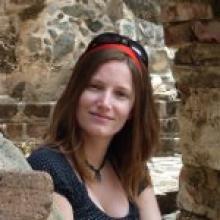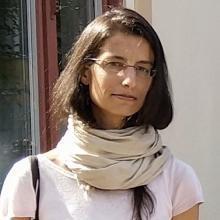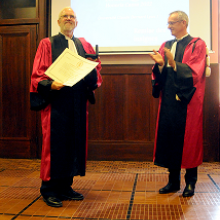Bioinformatics, Phylogeny and Evolutionary Genomics Group
Members
Maîtresse de conférences
UCBL
Tel: 04 72 44 84 87

Professeure des universités
UCBL
Tel: 33 04 26 23 44 76
Doctorante
UCBL
Enseignant-chercheur CPJ
UCBL

Directeur de recherche
CNRS
Tel: 33 04 72 44 62 97

Professeur d'université émérite
UCBL
Tel: 04 72 44 85 60
Ingénieur d'études CDD
CNRS

Directeur de recherche
CNRS
Tel: 33 04 72 43 11 67

Maîtresse de conférences
UCBL
Tel: 33 04 72 43 29 18
Doctorante
UCBL

Chargée de recherche
CNRS
Tel: 33 04 72 44 85 60

Directeur de recherche
CNRS
Tel: 04 72 44 84 87

Chargée de recherche
CNRS
Tel: 04 72 43 13 44

Directeur de recherche
CNRS

Maître de conférences
UCBL
Tel: 04 72 43 35 83

Chargée de recherche
CNRS
Tel: 04 72 44 81 42
Doctorant
CNRS

Directeur de recherche
CNRS
Tel: 33 04 72 44 62 96

Chargée de recherche
CNRS
Tel: 04 72 43 26 28
Doctorant
UCBL

Chercheur invité
UCBL
Our group focuses on two main axes: phylogenomics (i.e. the inference of evolutionary history based on genomics data) and evolutionary genomics (understanding the molecular and population processes that drive genome evolution). We see genomes both as a subject of research (how do genomes evolve, why are they structured the way they are?), but also as a main source of empirical knowledge about the macroevolutionary patterns (what do they tell us about the history of life on Earth?), or about the phenotypes and life-history strategies of organisms. Our works heavily rely on methodological developments (bioinformatics, modeling and statistical inference).
Evolution of genome architecture and expression
Genomes are the result of a long-term evolutionary process, shaped by multiple evolutionary forces. Some genomic features are adaptive (i.e. are beneficial for the fitness of organisms), others result from non-adaptive processes (random drift and biased gene conversion - BGC) or are caused by conflicts between multiple levels of selection (e.g. meiotic drive or the spread of selfish genetic elements). We explore different aspects of genome architecture (base composition landscapes, genome structure and size, impact of transposable elements, …) or functioning (gene expression, lncRNAs, epigenetic landscapes, …), and try to disentangle the relative contribution of adaptive and non-adaptive processes to their evolution. For this purpose, we consider both the molecular mechanisms (mutation, repair, recombination) and the population processes (selection, drift, BGC, …) that shape genetic variation.
Phylogenomics
We are interested in reconstructing the history of life on Earth. This research unfolds along several axes. First, we develop phylogenomic databases of aligned genetic sequences (e.g. BIBI, RiboDB or HOGENOM). Second, we conduct methodological research on how to accurately reconstruct deep phylogenies, infer divergence times, reconstruct ancestral genetic sequences, gene repertoires and life-history traits. This methodological work is translated into publicly available software programs (e.g. SeaView, PhyloBayes, Coevol). Finally, we apply these approaches to several important problems, among which: reconstructing the phylogeny of animals, of archaea, or the global tree of life; using phylogenies and ancestral gene repertoires to investigate the evolution of complex systems and the emergence of molecular and cellular functions in the three domains of life; reconstructing ancestral genetic sequences, a research activity that has industrial and biotechnological applications.
Teaching and outreach
We teach at University Lyon 1 (Master Bioinfo@Lyon), INSA, ENS Lyon, we organize bioinformatics internships. We regularly give conferences on evolution (tree of life, human evolution, genetic diversity, …).
Prospective students and postdocs are invited to apply, as we often welcome visitors for internships or research projects.
Keywords: Molecular evolution and Population Genomics; Phylogenomics; Computational Genomics; Comparative genomics; Bioinformatics; Statistical inference.
Publications
Display of 781 to 810 publications on 1109 in total
[From prevalence to predictive values: considerations on the antimicrobial susceptibility testing dealing with change of susceptibility rates].
Annales de Biologie Clinique . 63 ( 5 ) : 493-502
Journal article
see the publicationA multigene approach to phylogenetic analysis using the genus Mycobacterium as a model
International Journal of Systematic and Evolutionary Microbiology . 55 : 293-302
Journal article
see the publication[Luca: the last universal common ancestor]
Médecine/Sciences . 21 ( 10 ) : 860-5
Journal article
see the publicationMultigene Analyses of Bilaterian Animals Corroborate the Monophyly of Ecdysozoa, Lophotrochozoa and Protostomia
Molecular Biology and Evolution . 22 ( 5 ) : 1246-1253
Journal article
see the publicationPhylogenomics
Annual Review of Ecology, Evolution, and Systematics . 36 : 541-562
Journal article
see the publicationEvolutionary origins of genomic repertoires in bacteria
PLoS Biology . 3 : 0807-0814
Journal article
see the publicationRecognizing the pseudogenes in bacterial genomes
Nucleic Acids Research . 33 : 3125-3132
Journal article
see the publicationPolymorphix: a sequence polymorphism database
Nucleic Acids Research . 33 : 481-484
Journal article
see the publicationLes trésors cachés du génome humain
Pour la science . -- : 16-21
Journal article
see the publicationBioinformatics with a French accent
Genome Biology . 6 : 349.1-349.3
Journal article
see the publicationNatural history of the ERVWE 1 endogenous retroviral locus.
Retrovirology . 2:57 : 1 - 7
Journal article
see the publicationOnline synonymous codon usage analyses with the ade4 and seqinR packages
Bioinformatics . 21 : 545-547
Journal article
see the publicationMADE4: an R package for multivariate analysis of gene expression data
Bioinformatics . 21 : 2789-2790
Journal article
see the publicationHorizontal transfer of two operons coding for hydrogenases between bacteria and archaea.
Journal of Molecular Evolution . 60 ( 5 ) : 557-65
Journal article
see the publicationOptimized between-group classification: a new jackknife-based gene selection procedure for genome-wide expression data
BMC Bioinformatics . 6 : 1-12
Journal article
see the publicationType I Polyketide Synthases May Have Evolved Through Horizontal Gene Transfer
Journal of Molecular Evolution . ( 60 ) : 716-725
Journal article
see the publicationIn silico whole-genome scanning of cancer-associated nonsynonymous SNPs and molecular characterization of a dynein light chain tumour variant
Oncogene . 24 : 6133-6142
Journal article
see the publicationMolecular phylogeny of Myricaceae: a reexamination of host-symbiont specificity
Molecular Phylogenetics and Evolution . 34 ( 3 ) : 557-568
Journal article
see the publicationPhylogeography and taxonomic status of Niphargus virei (subterranean amphipod).
Proceedings on Symposium on World Subterranean Biodiversity . : 73-74
Conference paper
see the publicationClinical and environmental isolates of Legionella pneumophila serogroup 1 cannot be distinguished by sequence analysis of two surface protein genes and three housekeeping genes
Applied and Environmental Microbiology . 71 : 282-289
Journal article
see the publicationDe la prévalence aux valeurs prédictives: L`antibiogramme face à l`évolution de la résistance aux antibiotiques
Annales de Biologie Clinique . 63 : 493-502
Journal article
see the publicationSite Interdependence Attributed to Tertiary Structure in Amino Acid Sequence Evolution
Gene . 347 ( 2 ) : 207-217
Journal article
see the publicationA bunch of fun-guys: the whole-genome view of yeast evolution
Trends in Genetics . 21 : 1-3
Journal article
see the publicationExamining bacterial species under the specter of gene transfer and exchange
Proceedings of the National Academy of Sciences of the United States of America . 102 : 6595-6599
Journal article
see the publicationQuantitative prediction for two-dimensional bacterial genomic displays
Joint 15th IUPAB and 5th EBSA International Biophysics Congress .
Conference paper
see the publicationIntron size and exon evolution in Drosophila
Genetics . 170 : 481-485
Journal article
see the publicationA gradual process of recombination restriction in the evolutionary history of the sex chromosomes in dioecious plants
PLoS Biology . 3 : 0047-0056
Journal article
see the publicationA gradual process of recombination restriction in the evolutionary history of the sex chromosomes in dioecious plants.
PLoS Biology . 3 : 0001-0010
Journal article
see the publicationSteps in the evolution of heteromorphic sex chromosomes
Heredity . 95 : 118-128
Journal article
see the publicationPhylogenetic Analysis of Polyketide Synthase I Domains from Soil Metagenomic Libraries Allows Selection of Promising Clones
Applied and Environmental Microbiology . 70 ( 9 ) : 5522-5527
Journal article
see the publication
